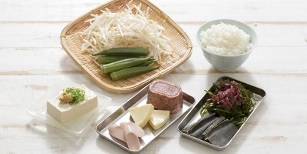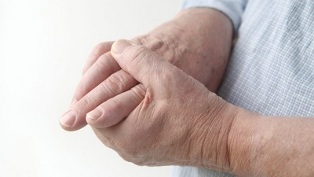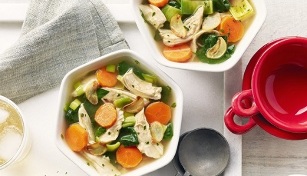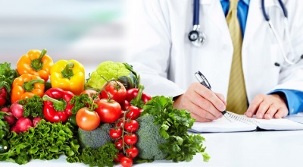
Gout was scientifically confirmed in 1865. The disease was described by Thomas Sendegum in his book The Gout Dissertation, in which he described the signs, symptoms, and seizures of the disease for 30 years.
In the time of Hippocrates, it was called the "disease of kings. "The reasons are taken into account: excessive and indiscriminate consumption of food and alcohol.
What is gout
Gout is a pathology involving the deposition of salts in the joints and kidneys, and these areas are characterized by severe pain. Progression of the disease leads to recurrent and increasing seizures, leading to the development of tophi. These are lumps that lead to changes in the shape of the joints. Urolithiasis and renal failure develop consistently.
Diagnosis ofis done by collecting joint fluid and detecting urates in it. X-rays of the affected joints are also taken. It can lead to positive treatment results in relieving inflammation, normalizing nutrition, and reducing acid in the urine.
The disease is more common in men after 40 years. Female pathologies are observed in the postmenstrual period. Joint damage occurs throughout the body, but most commonly on the legs.
Main causes of gout:
- inheritance;
- eat food with large amounts of purine;
- poor excretion of uric acid from the body;
- Purine nuclide catabolism.
Gout Diet Principles
The development of gout depends on the body's metabolic disorders. Diet is an effective method of treatment. Good nutrition should be checked daily. The main principle of a gouty diet is to reduce blood salts. With this in excess, the kidneys will not be able to work on their own. Failure to follow the diet can lead to relapses. A seizure of pain can begin at any time. This often happens at night. If you do not follow a diet, the disease can progress and spread to all joints.
Treatment should be done at home. This includes adhering to a balanced diet. This is considered a fundamental and effective method. The menu is compiled by the treating physician, taking into account the individual characteristics of the patient. Diet is essential to reduce uric acid levels.
Characteristics of the gout diet

Purines should not be included in the composition of foods in the gouty diet, they contribute to the accumulation of acids. Purines are found in meat and fatty foods. Therefore, gouty people are advised to eat more vegetarian food. The recipes don’t contain expensive ingredients, and the cooking technique isn’t complicated either. But it is important to combine only approved foods.
nutritional therapy can help treat the symptoms of gout at home.
Eating fatty and spicy foods leads to seizures with increased uric acid and severe pain pretty quickly. For example, consuming too much coffee with a high purine can trigger a relapse. High-risk foods include alcohol, beer, soda water, and even grapes. They are completely excluded from the patient’s diet.
In order to rapidly remove purines from the body, the patient is prescribed an abundant drinking system. The amount of liquid consumed per day reaches 2, 5 liters. For urolithiasis, alkaline water and sodium bicarbonate are required. It is possible to neutralize urine with excess plant proteins and citrus fruits in food.
Diet for foot gout
The gout diet should be constantly monitored. Since the treatment is done at home, the person suffering from the disease must have willpower and not violate the developed menu. Based on the patient's condition, a custom menu is created with authorized and prohibited products. Despite their simplicity, the dishes can be delicious and varied. The diet for leg gout does not have very strict restrictions, but it must satisfy the sick body and promote a healthy lifestyle.

Dietary errors in the disease:
- Consumption of foods containing purine;
- alcohol consumption;
- dehydration in the diet;
- large amounts of animal fat;
- Excessive consumption of animal proteins;
- table salt and pickles;
- There are few vegetables and fruits in your daily diet.
Foods allowed and forbidden in the gout diet
In the case of a gouty diet, the patient should be familiar with the permitted and prohibited foods in addition to the main treatment. It is impossible to cure this disease or eliminate the symptoms without following the rules of nutrition.
Prohibited Products:
- bakery products, namely rich products;
- meat (beef, lamb, pork, sausage);
- seafood (fatty types);
- salty and spicy milk;
- legumes;
- vegetables (sorrel, mushrooms);
- fruits (grapes, raspberries, figs);
- mayonnaise;
- sweets and cakes; animal fats;
- alcoholic beverages;
- black tea, coffee;
- sauces (mustard, horseradish);
- spices and herbs.
Listen!The above products should not be consumed or added to the patient's food!
At first glance, the gout menu may seem boring and tasteless. In fact, this is not the case.
There is a list of products that can be consumed without harm to your health:
- baked goods - uncomfortable pastries;
- meat - rabbit and chicken;
- cooked fish meat (low-fat varieties);
- eggs (1 piece per day);
- dairy products (low fat and non-salty);
- are not legumes;
- vegetables (potatoes, carrots, onions, garlic, tomatoes);
- fruits (green apples, apricots, tangerines);
- vegetable fats;
- fruit teas, natural juices from approved products.
You can vary your diet with seeds and nuts:
- nuts;
- cedar;
- almonds;
- hazelnuts;
- pistachios.
Peanuts are high in purine and should be excluded from the diet.
This is interesting!There has been a debate among scientists about the use of tomatoes in the patient's diet. After all, they contain traces of oxalic acid. Red vegetables have been shown to be harmless, but on the contrary, useful because of antioxidants and phytoncides. They eliminate the inflammation that often occurs in gout. It follows that tomatoes can be consumed in any quantity with gout.
Contraindications to gout

The most popular foods are contraindicated in the gouty diet. Because of the chronic pathology, you need and should get used to lean foods because they are designed to relieve symptoms and significantly reduce pain. The diet should always be followed. Because a cup of coffee or grapes can cause a pain attack.
During the period of worsening gout, medications are taken with a diet. Bed rest is also required. All this stops the inflammatory processes. When preparing a patient’s meals, it is better to keep a table with licensed and forbidden foods in a conspicuous place.
Limit your consumption of meat and fish twice a week. As recommended by doctors, fish should be eaten with gills and scales. These fish by-products are excellent at removing toxins from the body. In case of pain, the use of these products is postponed for a few weeks.
Semi-finished products and preserves are categorically contraindicated. Diet No. 6 prohibits the use of broths. After all, soups and peppers are made based on these. The fact that this exception is quite justified due to the addition of various spices and condiments that can cause an attack. It will be right to cook the meat separately and use the broth from under the vegetables as the broth. During the cooking process, the water is drained and changed several times. This reduces the concentration and flushes the purines out of the formulation.
Gout Diet: Menu of the Week
The disease is not curable, especially if the pathology is associated with diabetes or obesity. A special diet is used to reduce gout relapses and exacerbations - Table 6.

The gout diet can be followed continuously, although the menu is for a week. The diet is developed by your doctor.
There can be several options for such a diet, which are not much different. The process uses traditional cooking technology.
Monday
- tea with blueberry syrup, boiled egg, tomato salad, rye bread;
- freshly squeezed apple juice, steamed vegetables;
- beet salad, boiled turkey, stewed pumpkin, compote;
- boiled potatoes with cheese, salad with cabbage, rosehip tincture.
- kefir.
Tuesday
- cottage cheese pudding with sour cream, green tea with honey;
- bran biscuits, chicory drink;
- pasta soup with vegetables, braised chicken slices, fruit drink;
- vegetable stew, compote;
- cottage cheese.
Wednesday
- pumpkin pancakes, porridge with buckwheat in milk, tea;
- green apple;
- vegetable and rice soup, cooked cod, beet salad, carrot juice;
- buckwheat stew, apple juice, biscuit liver;
- wheat bran broth.
Thursday
- beet meat, without milk, with croutons;
- toast with cheese, chamomile tea;
- mashed potatoes with meatballs, potato pancakes, pancakes, compote;
- fried zucchini, fruit salad, milk tea;
- fermented fried milk.
Friday
- porridge, vegetable salad, cherry juice;
- watermelon, lemon, strawberry and pear smoothies, bread;
- mashed potatoes, rabbit stew, cabbage salad, tea;
- boiled eggs, barley soup, jelly;
- oven baked apples with cottage cheese and rosehip tea.
Saturday
- wheat flour, chicory drink;
- gingerbread with kefir;
- boiled chicken with buckwheat, eggplant caviar, tea;
- dietary pilaf, cucumber salad, bread, jelly;
- varenets.
Sunday
- casserole with cottage cheese, pancake with cottage cheese, tea;
- omelette with quail eggs (4 pcs);
- puree soup, garlic toast, rosehip tea;
- rice with steamed vegetables, beet salad;
- yogurt.
This is a rough menu, it does not contain forbidden foods for gout. A balanced and complete diet allows you to use it for a long time. Fast days should be taken to achieve greater impact.
Diet for Gout: Opinion of Nutritionists

The overview of the professor of the Department of Gastroenterology and Dietetics is as follows. If medication is ineffective, the gouty diet is the main treatment.
The severity of the process influences nutritional approaches to treating patients, namely:
- frequency of seizures;
- plasma uric acid levels;
- is the patient's body weight.
The amount of purine, fats, proteins, sodium salts and alcohol in the diet should be kept to a minimum.
Consumption of the diet rapidly reduces plasma uric acid and restores normal levels. Effective and healing effect based on natural ingredients.















































































